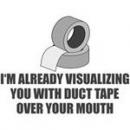WichitaSleepRT wrote:By the time you are done exhaling, ie typically when apneas happen
I agree.
WichitaSleepRT wrote:You don't need 7cm of pressure when you first begin exhaling, only when you are at the end of exhaltaion and through inhilation.
I agree.
WichitaSleepRT wrote:the C-Flex/EPR cycle is finished and the pressure is already back to the prescribed level.
I agree with
half of that. That's how Respironics' C-flex works. But that's not how ResMed's EPR works.
Taking a deep breath here, 'cause I can sure be wrong. All this is going to be just my layperson's opinion. I've used machines with C-Flex and machines with EPR. And read quite a bit about them. Doesn't mean I understand them, though...but anyway, here goes...
Many people, not just you, WichitaSleepRT think C-Flex and EPR behave the same way other than that C-Flex gives a vague drop dependent on the force of a person's exhalation and EPR gives an exact number of cms of drop. But that's just one difference in how they were designed to go about the job of making exhaling more comfortable.
Here is a crucial difference between those two manufacturers designs for exhalation relief, the way I understand it:
Respironics' C-Flex does, indeed, let the pressure already be in place
before exhalation is completely finished. ResMed's EPR, however, maintains its drop
at the end of exhalation and even AFTER exhalation is over.
As you said, the amount of pressure drop C-flex gives is very dependent on the force of the person's exhalation...at the beginning...when the person STARTS breathing out. Breathe out hard, and C-flex drops more than if you breathe out lightly. C-flex does not maintain the drop in pressure all the way to the very end of the exhalation. When the Respironics machine senses that the exhalation is beginning to dwindle or lose its force, the regular pressure begins coming back in. With C-flex, the "prescribed" pressure is, indeed, in place before the person would start to inhale again.
ResMed's EPR, on the other hand, gives only a small drop at the beginning of exhalation and moves the pressure down as the exhalation continues. The full drop with EPR doesn't happen at the beginning of exhalation. The full drop, whether the setting is 1, 2, or 3 cms, happens as the exhalation continues and stays down at the end of exhalation and throughout any pause at the end of the exhalation. EPR keeps the pressure down UNTIL the person actually starts to inhale again. Breathing in again is EPR's trigger to let the prescribed pressure come back.
You can try that out, WichitaSleepRT. Get hold of a ResMed machine, set the pressure at 7 and set EPR at 3, for a 3 cm drop. Breathe with it a few times, then..at the end of one of your exhalations, hold your breath. And hold it and hold it and hold it. Count off 15 seconds, but don't inhale. At the end of the 15 seconds of breath-holding-after-exhaling, you'll feel the machine switch up to pressure of 7.
So, if an apnea has happened at the end of exhalation, or during a pause before inhalation, the person might not be able to inhale. EPR will still be keeping the pressure down the exact number of cm drop (1, 2, or 3 cms) it's been set for, and will wait, and wait, and wait -- even during any pause after the end of exhalation -- waiting to sense that the person actually starts to inhale again.
Inhalation is the trigger that makes EPR stop holding the pressure down and allow the "prescribed" pressure back in. With an apnea in place, the person can't initiate a breath. EPR is not going to let the pressure go back up until the person does start to inhale. A real catch-22. ResMed knew that could happen, so they built in a safeguard for that scenario.
The safeguard is this: if 15 seconds go by after exhalation is finished, and the person has still not started to inhale (an apnea could sure keep a person from being able to inhale) the ResMed machine will finally stop waiting for an inhalation to trigger EPR to stop holding the pressure down. After 15 seconds of no breathing in, the machine will suspend EPR and go back up to the prescribed pressure. After that little episode, there will have to be at least one more another normal inhalation, before EPR will start doing its thing again.
From ResMed's site:
http://www.resmed.com/en-us/products/fl ... =products2
EPR Timeout
If a patient's exhalation period exceeds 15 seconds, EPR immediately suspends. The treatment pressure reverts to set CPAP and remains suspended until the next inhalation phase is detected.
From Respironics' site:
http://cflex.respironics.com/
C-Flex pressure relief technology makes sleep therapy more comfortable by reducing pressure at the beginning of exhalation and returning to therapeutic pressure just before inhalation.
If a person's prescribed pressure happens to be right on the line, so to speak, for preventing apneas, then EPR set for one or two or three exact cms below that mark may let some apneas get well underway before the person can even get the next inhalation started. Without an inhalation STARTING, EPR is going to hold the pressure down, at a subtherapeutic level, for at least the 15 seconds that it takes before EPR says, "Whoops, this person is taking too long to inhale again...maybe they're having an apnea...I'd better let the regular pressure back in!"
I don't mean to make a big deal of that, even though it sounds like I am. LOL!! Just trying to explain the difference between when the "prescribed" pressure is there, and when it's not, with C-Flex and with EPR, as I understand it. I could be wrong.
Most people's prescribed pressure is probably not going to be right on a "straw that broke the camel's back" line of pressure that prevents most apneas, anyway. It's very likely that their sleep study came up with a pressure than was a little higher than what it takes to prevent their apneas. A titration is likely to have gone up more than just to a point that prevents apneas. A titrated pressure is likely to be a little (maybe a lot) higher than just what it takes to prevent apneas. Higher, in order to also knock out hypopneas and lesser flow limitations, and residual snores.
But if I'm going to use EPR, I don't think it's a bad idea to up the prescribed pressure a cm or two...just in case.
WichitaSleepRT wrote:From what I have read on this board there are a lot of you that are informed and have enough "smarts" to do just as you say.
We're all trying, as best we can. I'm wrong a lot, but I do like learning.
WichitaSleepRT wrote:But trust me there are far more out there that don't have a clue what an apnea is! They only know that they have sleep apnea. And should leave the xPAP alone!
I agree. Most cpap users out there probably don't have the least bit of desire to learn about their disorder or about the treatment for it, other than, "Where's the on/off switch?" Unfortunately about half of CPAP users turn the machine off permanently. My hat's off to you, WichitaSleepRT, for working with them every day, trying to help them. You obviously do care, or you wouldn't have bothered to offer your thoughts and opinions in this thread.
WichitaSleepRT wrote:Thanks for saying "nice having you here" but the responses I have received so far have not been so nice. After today I'm signing off as there are enough "cooks in this kitchen!"
Well, I hope you'll stay. I think you received quite a few polite responses. I think it's always good to see and discuss a range (no pun intended!) of opinions. That's how we all keep learning.
My edit: The "15 seconds" I kept mentioning begins the countdown from when exhalation starts. The countdown doesn't begin at the end of exhalation, which is what I thought when I wrote the post.
Depending on how long a person's exhalation lasts, there will be a varying number of seconds (probably about 10 - 13 seconds for most people) remaining in the "15 seconds" by the time exhalation is finished and during the pause before the person tries to breathe in again. 











